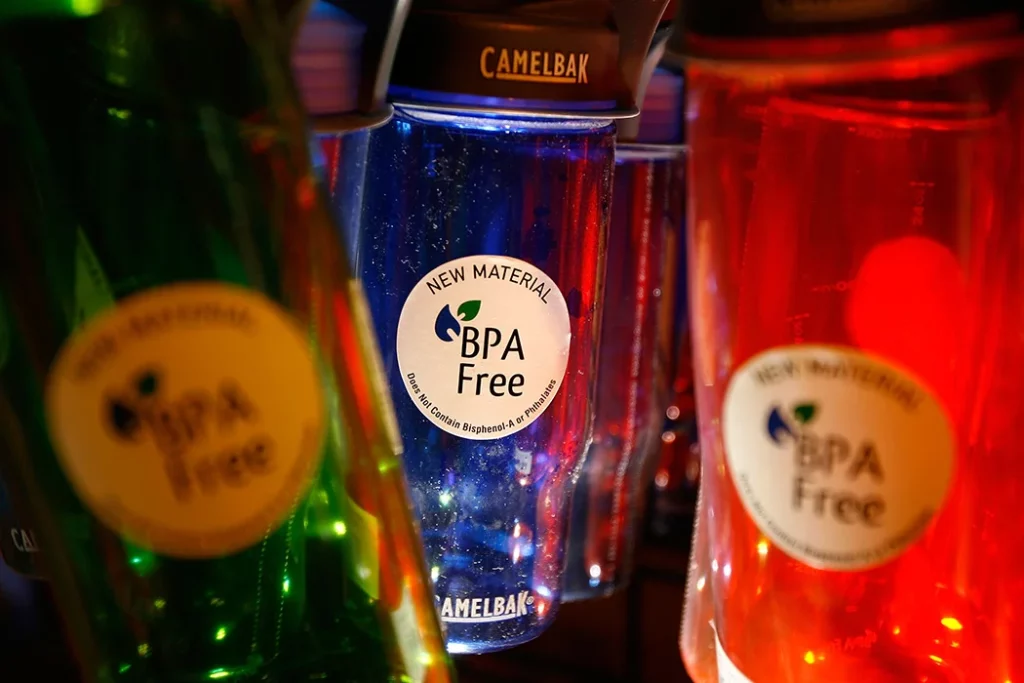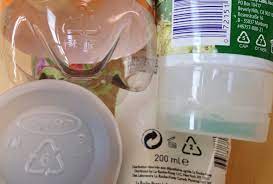When it comes to food storage, safety is paramount. We use various containers and packaging materials, many of which are made of plastic.
Among these, food grade plastic’ is a term that often pops up. But does food grade equate to BPA-free? This blog post aims to cover this question properly.
Is Food Grade Plastic BPA-free?
If you’re anything like me, you’ve probably spent a good chunk of your life using plastic containers without a second thought. They’re convenient, right?
But in recent years, there’s been a lot of talk about something called BPA, and it’s got a lot of us thinking more about what our food is stored in.
Now, when you’re shopping for containers or bottles, you’ve probably seen products labeled as ¡®food grade plastic’. It sounds safe, doesn’t it? But here’s the million-dollar question: Are they BPA-free?
Well, the short answer is¡ not always.
You see, food-grade plastic is a term that simply means the plastic is safe to come into direct contact with food. This is based on the idea that it won’t leach harmful substances into the food it’s storing. It’s a standard set by the U.S. Food and Drug Administration (FDA), and it’s a pretty important one at that.
But ¨C and here’s where things get a little more complicated ¨C just because a plastic is food grade doesn’t necessarily mean it’s free from BPA.
BPA, or Bisphenol A, is a chemical that’s been used in plastics and resins since the 1960s. It’s got some useful properties, like making plastics clear and tough, but it’s also been linked to health concerns.
In recent years, there’s been a big push to remove BPA from food-grade plastics due to these health concerns. Many manufacturers have switched to BPA-free alternatives, and you’ll often see ¡®BPA-free’ labels on products. But it’s not a given.
Some food-grade plastics can still contain BPA, and it’s important to check the label if you’re concerned.
In essence, food grade? Good. BPA-free? Even better. But remember, one doesn’t always mean the other. It’s a good reminder that sometimes, the devil is in the details.
How to Know A BPA-Free Plastic Container?
So, now that we’ve established that not all food-grade plastics are BPA-free, you’re probably wondering how to identify a BPA Free plastic container.
Good, and here are ways to find out¡
First off, take a look at the product label. Sounds obvious, right? But it’s an important step.

Many manufacturers today are aware that consumers are concerned about BPA. So, if their product is BPA-free, they’re likely to shout it from the rooftops¡ªor, at least, print it clearly on the label. Look for terms like ¡°BPA-free¡± or ¡°Non-BPA¡± on the packaging or the product itself.
Now, if you don’t see anything about BPA on the label, don’t lose hope just yet. Check out the recycling symbol on the bottom of the product. You know the one I’m talking about¡ªthe triangle made of three arrows.

Inside that triangle, you’ll usually find a number. This number is called a resin identification code, and it can give you some clues about what kind of plastic you’re dealing with.
If the number inside the triangle is 3 or 7, this might be a red flag. Not all plastics with these numbers contain BPA, but some do.
On the other hand, plastics marked with numbers 1, 2, 4, and 5, typically being BPA-free, and 2, 4, and 5 being the most recommended.
Of course, these codes aren’t a foolproof way to determine if a product contains BPA, but they can help you make a more informed choice.
And when in doubt, reach out to the manufacturer. They should be able to provide you with more specific information about their products.
What Makes Food-Grade Plastics Safe?
It’s important to understand that when we say a plastic is ¡°food-grade,¡± we mean it’s safe to be in direct contact with food.
This is based on standards set by various authorities like the U.S. Food and Drug Administration (FDA) and the European Food Safety Authority (EFSA). These organizations have rigorous testing procedures to ensure that the materials used in these products won’t harm us when used correctly.
One of the key things that these authorities look at is whether a plastic is likely to ¡°leach¡± substances into food.
You see, certain conditions like high temperatures can cause some plastics to release small amounts of chemicals into the food or drink they’re in contact with. So, if a plastic is less likely to do this, it’s more likely to be considered food-grade.
Food-grade plastics also needs to be resistant to bacteria and easy to clean.
Imagine using a plastic container that’s hard to wash or that bacteria love to stick to¡ªyuck, right? So the material’s resistance to bacteria and its compatibility with cleaning agents are also big factors in whether it gets the food-grade stamp.
It’s also worth noting that food-grade plastics should be non-toxic and free from dyes or recycled materials that could be harmful. They should be strong, durable, and resist breaking down when they’re used over and over again.
Conclusion
The key takeaway is that while food grade plastic serves an important purpose, it doesn’t automatically mean BPA-free.
As consumers, our responsibility is to stay informed and make conscious choices. And who knows? As research progresses and more alternatives become available, perhaps the landscape of food-safe plastics will continue to evolve for the better.




